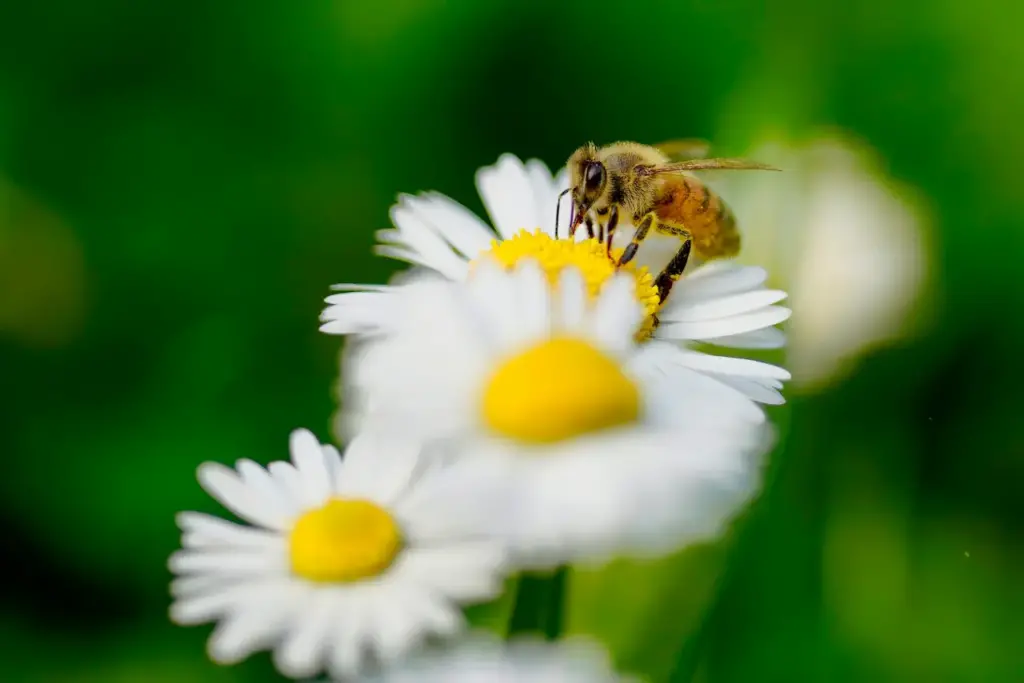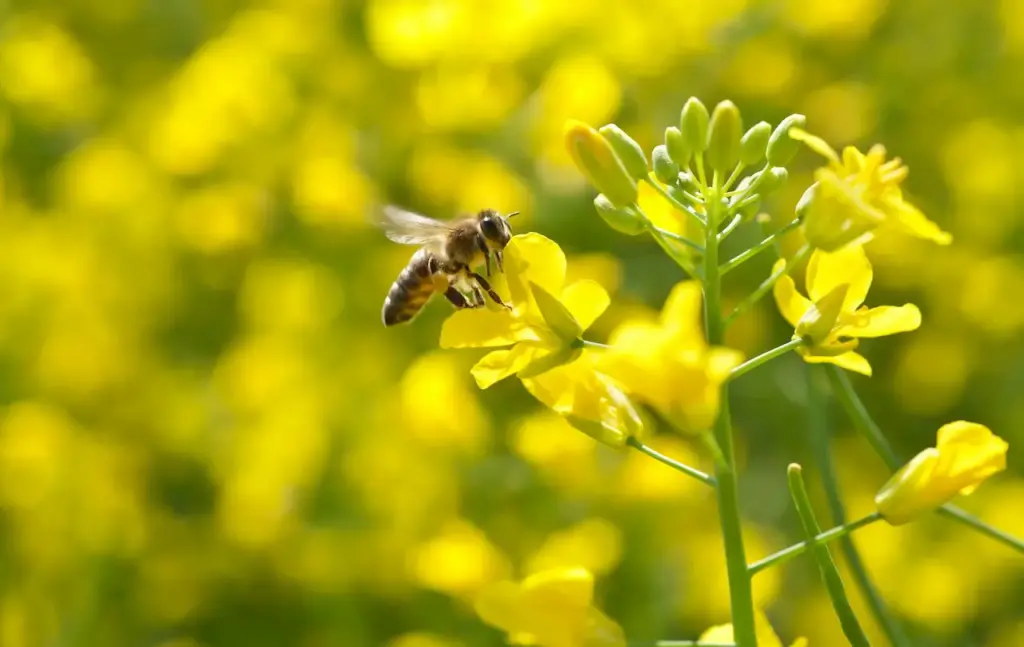Acetylcholine is a neurotransmitter, which is a chemical that neurons (nerve cells) use to communicate with each other. It was the first neurotransmitter to be discovered in 1914 by Henry Hallett Dale.
Acetylcholine plays important roles throughout the nervous system, including the regulation of muscle movement, memory, arousal, and attention.
Acetylcholine Synthesis and Structure
Acetylcholine is synthesized in nerve terminals from choline and acetyl coenzyme A. Choline is obtained from the diet and is also produced by the recycling of acetylcholine by the enzyme acetylcholinesterase. Acetyl coenzyme A provides the acetyl group and is produced from glucose metabolism.
The chemical structure of acetylcholine consists of an acetyl group (two carbon atoms bound to a carbonyl) linked to a choline group. The choline group has a positively charged quaternary ammonium structure. This gives acetylcholine an overall positive charge and makes it soluble in water.

What Is Acetylcholine
Acetylcholine Receptors
Acetylcholine exerts its effects by binding to and activating receptors located on target cells such as muscle fibers, gland cells, heart cells, and other neurons. There are two main families of acetylcholine receptors:
- Nicotinic acetylcholine receptors – Named because they also bind the drug nicotine. They are ion channel-linked receptors that open when acetylcholine binds, allowing positive ions like sodium and calcium to flow into the cell. This causes a rapid excitation of the target cell. They are found at neuromuscular junctions and in the central nervous system.
- Muscarinic acetylcholine receptors – Named because they preferentially bind the drug muscarine. They are G protein-coupled receptors that exert slower modulatory effects on target cells through second messenger systems when activated by acetylcholine. Five subtypes exist (M1-M5) and are located in the central and peripheral nervous systems as well as other tissues like the heart, lungs, and glands.
Functions of Acetylcholine
Acetylcholine has many important functions throughout the body, including:
Neuromuscular Junctions
Acetylcholine acts as the main neurotransmitter at neuromuscular junctions, the synapses between motor neurons and skeletal muscle fibers. When an action potential reaches the nerve terminal, it triggers calcium influx, which causes vesicles filled with acetylcholine to fuse with the membrane and release acetylcholine into the synapse.
The acetylcholine then binds to nicotinic receptors on the muscle fiber, opening the receptor channel and allowing sodium and calcium to flow in. This depolarizes the muscle fiber, generating an action potential that causes the muscle fiber to contract.
Autonomic Nervous System
Both the sympathetic and parasympathetic divisions of the autonomic nervous system use acetylcholine as a neurotransmitter. In the parasympathetic system, acetylcholine is released from nerve fibers that originate in the brainstem and sacral spinal cord.
It acts on muscarinic receptors in target organs like the heart, lungs, and glands, causing effects like decreased heart rate, constriction of the pupils, increased digestive secretions, and relaxation of the bladder.
In the sympathetic system, acetylcholine is released from preganglionic neurons, originating in the spinal cord that synapses on postganglionic neurons. It stimulates nicotinic receptors on the postganglionic neurons, exciting them to release norepinephrine, which then acts on target organs.
Central Nervous System
In the brain, acetylcholine has neuromodulatory effects and is involved in arousal, attention, learning, and memory. The basal forebrain contains neurons that project to the cerebral cortex and hippocampus and release acetylcholine.
By binding to nicotinic and muscarinic receptors on these target neurons, acetylcholine can increase their excitability and enhance synaptic plasticity.
This is believed to be important for memory formation. Degeneration of basal forebrain cholinergic neurons contributes to cognitive decline in Alzheimer’s disease.
Acetylcholine also plays a role in regulating sleep and wakefulness. Cholinergic neurons in the pons project widely throughout the brain and help promote cortical activation during wakefulness.
In the striatum, acetylcholine influences dopamine release which affects motor control. Abnormal cholinergic signaling in the striatum is implicated in movement disorders like Parkinson’s disease.

Acetylcholine Termination
The actions of acetylcholine are terminated by the enzyme acetylcholinesterase, which is located in the synapse as well as on target cell membranes. Acetylcholinesterase rapidly breaks down acetylcholine into choline and acetate.
The choline can then be taken back up by the neuron to resynthesize new acetylcholine vesicles. This rapid enzymatic degradation allows for precise control over both the timing and localization of acetylcholine signaling.
Alterations in acetylcholinesterase activity can have major impacts on cholinergic signaling. Nerve gases and insecticides like organophosphates and carbamates exert their toxic effects by inhibiting acetylcholinesterase activity, leading to excess accumulation of acetylcholine.
This overstimulates and disrupts cholinergic pathways involved in breathing, heart rate, muscle control, and cognition. Medications used to treat myasthenia gravis and Alzheimer’s disease work by inhibiting acetylcholinesterase to boost levels of acetylcholine at synapses.
Acetylcholine and Honey Bees
Acetylcholine signaling is vitally important in honey bees. It is the main neurotransmitter used in the bee brain and controls essential functions like sensory integration, motor control, learning, and memory.
At neuromuscular junctions, acetylcholine mediates wing muscle contractions needed for flight. In the mushroom bodies of the bee brain, acetylcholine modulates synaptic plasticity during olfactory learning and memory formation. Cholinergic interneurons help integrate sensory information and coordinate motor outputs.
Acetylcholine also controls vital aspects of bee social behavior. It mediates signals between bees about resources and hive defense.
The release of acetylcholine in the bee brain underlies recognition of the queen mandibular pheromone and triggers retinue response behaviors. Cholinergic signaling enables communication through bee dances and waggle runs that provide information about food source locations.
Acetylcholine in the Bee Brain
Mushroom Bodies
Acetylcholine modulates synaptic plasticity in mushroom bodies during olfactory learning and memory formation. Impairments in mushroom body acetylcholine signaling from pesticides lead to deficits in odor discrimination and memory recall in bees.
Antennal Lobes
Acetylcholine mediates the transmission of olfactory information from antennal lobe sensory neurons to projection neurons. Disruption of antennal lobe acetylcholine reduces odor detection threshold in bees.
Optic Lobes
Acetylcholine in optic lobes processes visual cues important for navigation and orientation. Pesticide disruption of optic lobe acetylcholine contributes to bees getting lost on foraging trips.
Acetylcholine and Bee Social Behaviors
Queen Mandibular Pheromone
Release of acetylcholine in bee brain elicits retinue response to queen mandibular pheromone. Pesticides may interfere with acetylcholine-mediated queen recognition and disrupt hive social structure.
Worker Communication
Acetylcholine enables the transmission of signals between workers about food sources and threats. Impaired acetylcholine communication from pesticides reduces colony coordination and foraging efficiency.
Bee Dances
Cholinergic signaling underlies the ability to communicate food locations through waggle dance. Pesticide effects on acetylcholine cause imprecise or failed waggle dances.
Acetylcholine in Bee Muscle Control
Flight Muscles
Acetylcholine is a key neurotransmitter at neuromuscular junctions of flight muscles. Pesticide disruption of flight muscle acetylcholine transmission impedes wing function and control.
Leg and Mouthpart Muscles
Precise cholinergic signaling is needed for coordinated movement of legs and mouthparts when walking and consuming nectar. Imprecise leg and mouthpart control from pesticides lead to problems moving flowers and handling food.
Heart Muscles
Acetylcholine regulates heart rate through pacemaker potentials in bee heart muscle cells. Pesticides that alter heart acetylcholine signaling can affect circulation and oxygen delivery.
Acetylcholine in Bee Development
Larval Growth
Acetylcholine assists in nutrient absorption and metabolism to support the growth of larvae. Developmental defects from pesticide exposure may arise from impaired larval acetylcholine.
Pupal Metamorphosis
Cholinergic signaling coordinates widespread changes during pupal metamorphosis. Disruption of acetylcholine during metamorphosis leads to structural defects in adult bees.
Ovarian Maturation
Acetylcholine establishes oocyte gradients needed for proper egg development. Reduced ovarian function from pesticides is attributed partly to impaired acetylcholine.
Specific Pesticide Effects on Bee Acetylcholine
Neonicotinoids
Neonicotinoids overstimulate nicotinic acetylcholine receptors, causing paralysis and death. Sublethal neonicotinoid exposure impairs learning, memory, and neural development that rely on precise acetylcholine signaling.
Organophosphates
Organophosphates inhibit acetylcholinesterase enzyme activity, leading to excess acetylcholine accumulation. Organophosphate toxicity generates cholinergic dysfunction that disrupts navigation, immunity, and reproduction.
Other Pesticides
Fipronil blocks GABA receptors, which increases acetylcholine release and neural excitation. Glyphosate may inhibit acetylcholinesterase activity similar to organophosphates.
Combinatorial Effects
Multiple pesticide exposures combine to amplify the disruption of acetylcholine signaling. Synergistic pesticide toxicity produces greater impairment of cholinergic neurotransmission than individual pesticides.
In Vivo Experiments in Bees
Evaluate the effects of pesticide exposure on bee behaviors like learning, memory, navigation, and social interactions.
Use electrodes to directly measure how pesticides alter electrical signaling between acetylcholine neurons in the bee brain.
Assess changes in gene expression of acetylcholine receptors, enzymes, and transporters in bee brains following pesticide exposure.
Cell Culture Models
Isolate neurons from bee brains and grow in cell culture. Directly test how pesticides affect acetylcholine release and receptor function in bee neurons.
Engineer cell lines that produce signals when acetylcholine receptors are activated. Expose bee samples containing acetylcholine to reporter cells to measure neurotransmission.
Biochemical Assays
Measure acetylcholinesterase enzyme function in bee brain homogenates after pesticide exposure. Determine if pesticides directly inhibit acetylcholinesterase activity.
Quantify acetylcholine concentrations in bee brains using chromatography techniques. Assess if pesticides alter acetylcholine synthesis, release, or breakdown.
Use radiolabeled ligands to quantify acetylcholine receptor density and affinity in bee brain sections. Evaluate if pesticides change receptor expression and sensitivity.
Protecting Bee Acetylcholine System from Pesticides
Reducing Reliance on Harmful Pesticides
- Prioritizing Integrated Pest Management: Emphasize integrated pest management strategies that minimize the use of insecticides toxic to bees.
- Creating Healthy Bee Habitats: Provide bees with diverse nectar and pollen sources to improve immunity to pesticides.
- Supporting Organic Farming Practices: Organic farming avoids synthetic pesticides linked to higher bee mortality.
Developing Safer Chemical Pest Control
- Natural Pesticides: Investigate botanical insecticides that are less toxic to bee cholinergic function.
- Novel Chemistries: Design pesticides with selective toxicity and minimal effects on bee acetylcholine signaling.
- Targeted Delivery Methods: Use bait stations, pheromones, and genetic techniques to target pests and avoid wide pesticide exposure.
Improving Pesticide Regulations and Guidelines
- Stricter Toxicity Testing: Require more rigorous toxicity data on sublethal effects of pesticides on bee acetylcholine function.
- Limiting High Risk Compounds: Prohibit pesticide chemistries known to significantly disrupt bee acetylcholine signaling.
- Enhanced Labeling Standards: Include clear warnings about pollinator dangers and restrictions on bee-toxic pesticide product labels.
Effects of Pesticides on Bee Acetylcholine System
Many pesticides and insecticides exert their toxic effects by disrupting acetylcholine signaling in insects. This includes neonicotinoids and organophosphates, which have been implicated in honey bee declines.
Neonicotinoids are chemically similar to nicotine and act as agonists at nicotinic acetylcholine receptors. This overstimulates the receptors, causing paralysis and death in insects. But neonicotinoids can also have chronic sublethal effects in bees, such as impairments in learning, memory, orientation, and social behaviors.
Organophosphates like chlorpyrifos directly inhibit acetylcholinesterase activity. This leads to excess acetylcholine accumulation at synapses, which disrupts neurotransmission.
Exposure to organophosphates has been linked to bee navigation and orientation deficits, reduced ovarian development, and weakened immune function.
The extensive reliance of bees on acetylcholine signaling for so many crucial aspects of their survival and behavior makes their cholinergic system especially vulnerable to pesticides.
Ongoing exposure to pesticides that target the acetylcholine system likely contributes to increased bee mortality seen in recent years. More research is needed to fully understand these pesticide effects and develop safer alternatives that do not disrupt this vital neurotransmitter system in bees and other beneficial insects.
Conclusion
Acetylcholine was the first neurotransmitter to be identified, and decades of research have revealed its multifaceted importance throughout the nervous system. It mediates neuromuscular communication, autonomic function, sensory and motor processing, arousal, cognition, and reward pathways.
The effects of acetylcholine depend on the receptor subtypes expressed in target tissues. Cholinergic signaling is terminated by acetylcholinesterase enzymes that rapidly break down acetylcholine after release.
Dysfunction in acetylcholine neurotransmission underlies many debilitating neurological and neuromuscular diseases.
Acetylcholine is also a vital neurotransmitter for insects like honey bees, and pesticides that disrupt cholinergic signaling can impair bee survival and behavior. Ongoing research on acetylcholine will further illuminate how this ubiquitous neurotransmitter contributes to health and disease in both humans and animals.
FAQs
How does acetylcholine work in the nervous system of bees?
Acetylcholine is the main neurotransmitter used in the honey bee nervous system. It is released from neuron endings and binds to two types of receptors – nicotinic and muscarinic acetylcholine receptors. Nicotinic receptor activation allows positive ions like sodium and calcium to enter cells, causing rapid excitation.
Muscarinic receptors have slower, modulatory effects mediated by second messengers. In bees, acetylcholine regulates functions like learning, memory, sensory integration, motor control, navigation, and communication. It enables critical behaviors such as waggle dances, queen recognition, flight muscle contractions, and foraging.
What types of pesticides affect acetylcholine signaling in bees?
Many insecticides target the acetylcholine system, including neonicotinoids and organophosphates. Neonicotinoids overstimulate nicotinic receptors, causing paralysis and death. Organophosphates inhibit acetylcholinesterase, the enzyme that breaks down acetylcholine.
This leads to excess acetylcholine accumulation at synapses. Other pesticides like fipronil and glyphosate may also disrupt acetylcholine transmission. These pesticides impair vital cholinergic functions in bees, like memory, immunity, reproduction, and flight.
How do scientists study pesticide impacts on bee acetylcholine?
Scientists use techniques like behavioral assays, electrophysiology, molecular studies, cell cultures, and biochemical assays. Behavioral tests evaluate effects on learning, memory, and navigation. Electrophysiology directly measures electrical signaling between acetylcholine neurons.
Molecular techniques assess changes in the expression of acetylcholine genes and proteins. Cell cultures examine acetylcholine release in isolated bee neurons. Biochemical assays quantify enzyme function, neurotransmitter levels, and receptor-binding properties. These methods elucidate specific mechanisms of pesticide neurotoxicity.
What are the effects of pesticide impairment of acetylcholine on bee health and survival?
Disruption of acetylcholine signaling impairs cognition, orientation, immunity, development, and social coordination in bees. Bees have trouble communicating, locating food sources, avoiding predators, fighting infections, and reproducing.
Colonies become dysfunctional and are more prone to collapse. Impairment of acetylcholine is a major contributor to increased bee mortality and pollinator decline seen in recent decades.
How can bee acetylcholine systems be protected from pesticides?
Strategies include reducing pesticide usage, creating bee habitats, developing safer pesticides, and improving regulations. Prioritizing integrated pest management and organic farming practices can decrease exposure.
Designing selective, natural pesticides avoids toxicity. Enforcing guidelines for toxicity testing and labeling reduces risky compounds being applied near bees. Protecting bee acetylcholine will require ongoing research along with policy changes to ensure sustainable agriculture.
Why is the acetylcholine system more vulnerable to pesticides in bees compared to humans?
The extensive dependence of bees on acetylcholine signaling makes them more susceptible than humans to pesticides that target this neurotransmitter system. Acetylcholine has a more widespread role in the bee nervous system, regulating functions like cognition, behavior, development, immunity, and motor control.
Bees only have around 1 million neurons compared to humans’ 86 billion. So, disruption of acetylcholine neurotransmission in bees impairs a greater proportion of total brain function.

